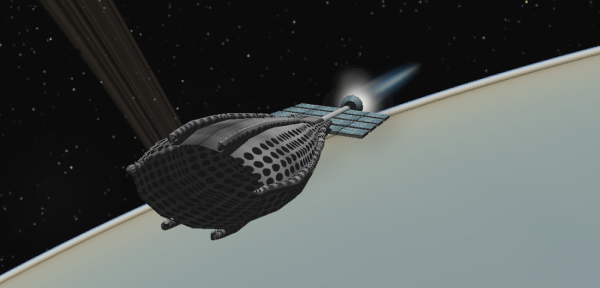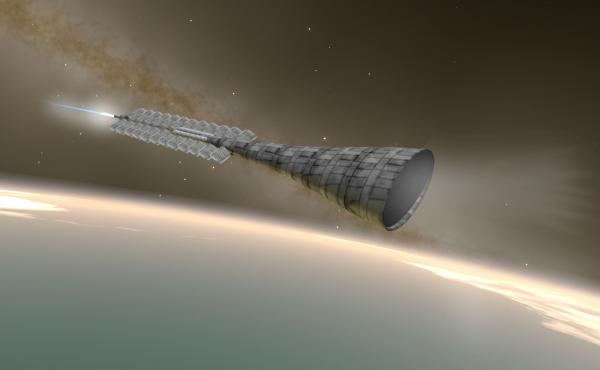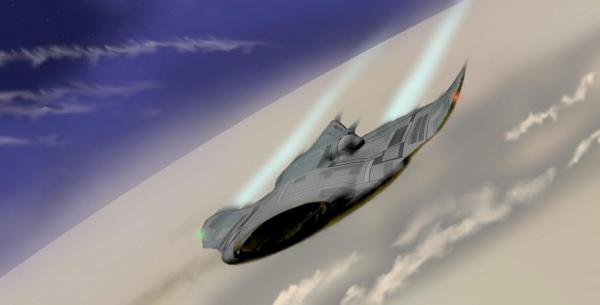BY LETTER
Scoopships
Technology > Application > Infrastructure
Technology > Application > Transportation > Ships
Technology > Application > Transportation > Surface-To-Orbit Transport
Technology > Application > Transportation > Ships
Technology > Application > Transportation > Surface-To-Orbit Transport
Atmospheric Resource Collection | |
 Image from Steve Bowers and The Astronomer | |
| A scoopship collects resources from the atmosphere of Hefring | |
Other gases which are often collected include methane, ammonia, argon, neon and sulphide compounds; some planets with very hot atmospheres can also yield silicates and metal vapours.
Solar Powered Scoopships
 Image from Steve Bowers | |
| A solar-powered scoopship collecting gases from a planetary atmosphere | |
Tethered Scoopships
 Image from Steve Bowers | |
| Atmospheric scoop funnels suspended from a pair of orbital rings collect gases from a Gaian world | |
Most effective of all are scoop funnels deployed from orbital ring systems; these trawler-like scoops can collect resources continuously and export the compressed gases using mass-drivers.
Fusion and Conversion Drive Scoopships
 Image from Steve Bowers | |
| Fusion-powered scoopships collect carbon dioxide and nitrogen from the atmosphere of Venus; the carbon can be used for construction, while the other gases are exported to habitats across the system | |
Related concepts
The gases extracted from gas giant atmospheres are often refined in situ using large floating refineries supported by hot-hydrogen balloons, The resulting products, such as deuterium, He3 and other commercially valuable resources, are collected and lifted to orbit by rocket shuttle, often automated and powered by fusion. Before the development of conversion drive, mining balloonships were commonplace; fusion mining is still practised in locations where ultratech is distrusted by the locals.Star Mining uses many of the same techniques as planetary atmospheric mining, although in an environment that is considerably more energetic and demanding. However star miners use magnetic ramscoops instead of collecting resources using funnels made of solid matter. Starmining technology can be used to collect resources from very hot planetary atmospheres, and from the comet-like tails emitted from evaporating worlds.
Ramscoops and ram-assisted rockets use extremely large magnetic scoop systems to collect interplanetary and interstellar material for use as propellant and/or fuel during flight.
Related Articles
- Atmosphere - Text by M. Alan Kazlev
The gaseous envelope surrounding a planetary object, moon or star, (or possibly the habitable surfaces of an artificial structure. A typical atmosphere consists of a mixture of gases. Some of the most common are hydrogen, helium, methane, nitrogen, oxygen, argon, carbon dioxide, water vapour, and ammonia. Often an atmosphere is divided into zones of similar pressure, temperature, and composition. - Conversion Drive
- Mining
- Ramscoop and RAIR ships
- SunMiner
- Torch Drives
Appears in Topics
Development Notes
Text by Steve Bowers
Initially published on 06 September 2019.
Initially published on 06 September 2019.
Additional Information
Atmospheric Mining links
http://toughsf.blogspot.com/2017/09/low-earth-orbit-atmospheric-scoops.htmlMining Atmospheres
https://www.centauri-dreams.org/2011/06/01/starship-fuel-from-the-outer-system/
A review of research in low earth orbit propellant collection






